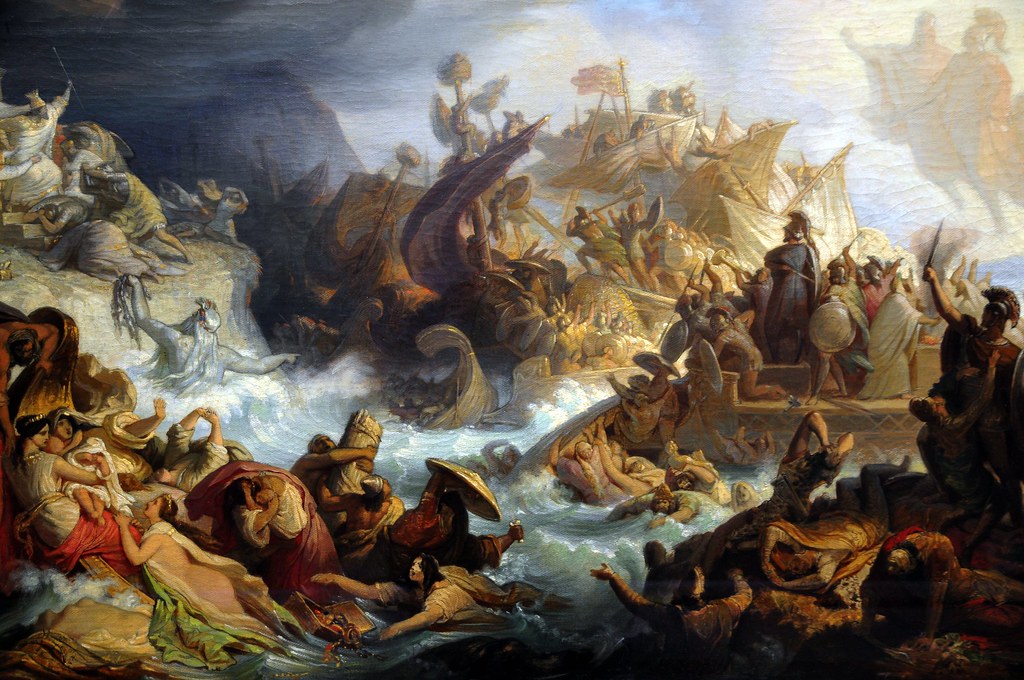
|
| Battle of Salamis Naval Battle of Salamis (29 September 480): important battle during the Persian War, in which the Greek allies defeated the Persian navy. After the Persian victories at Artemisium and Thermopylae, king Xerxesproceeded to Athens, which he captured in the last days of September 480. Meanwhile, the Greek navy, which had managed to get away from Artemisium, stayed on the isle of Salamis, opposite Athens. The presence of the enemy close to Phaleron, the Athenian harbor, created a strategic problem for the Persians: they could not use their port as easy as they wanted. And this was something they had to, because their army was proceeding to the Isthmus of Corinth, and it was imperative that the transport ships, brimful with food, could join the soldiers on the Isthmus. It was, therefore, imperative to expel the Greeks from Salamis. According to a story by Herodotus that may or may not be true, the Athenian admiral Themistocles, pretending to be a friend of the Persians, lured the enemy navy into the straits of Salamis: he ordered a slave to row to the shore, and tell the Persians that the Greek allies were to abandon their position. If the Persians would enter the strait between Salamis and the mainland, they would easily defeat the Greeks. The story is already known to Aeschylus, a contemporary; on the other hand, the Persians hardly needed this incentive, as they were anyhow forced to attack. It was a serious setback, but not a disaster. After the defeat, the Persians occupied winter quarters in Thessaly. Meanwhile, however, Babylon was unquiet and king Xerxes may have had to send an army to the east to suppress a revolt (Arrian of Nicomedia, Anabasis, 7.17.2). In the following year, 479, the Persian commander Mardonius had insufficient troops to defeat the united Greek army at Plataea. In retrospect, Salamis proved to be the decisive battle in the Persian War. Part of the Greco-Persian Wars
Date Location The Battle of Salamis was fought between an Alliance of Greek city-states and the Persian Empire in September 480 B.C., in the straits between the mainland and Salamis, an island in the Saronic Gulf near Athens. It marked the high-point of the second Persian invasion of Greece which had begun in 480 B.C. To block the Persian advance, a small force of Greeks blocked the pass of Thermopylae, while an Athenian-dominated Allied navy engaged the Persian fleet in the nearby straits of Artemisium. In the resulting Battle of Thermopylae, the rearguard of the Greek force was annihilated, whilst in the Battle of Artemisium the Greeks had heavy losses and retreated after the loss at Thermopylae. This allowed the Persians to conquer Boeotia and Attica. The Allies prepared to defend the Isthmus of Corinth whilst the fleet was withdrawn to nearby Salamis Island. Although heavily outnumbered, the Greek Allies were persuaded by the Athenian general Themistocles to bring the Persian fleet to battle again, in the hope that a victory would prevent naval operations against the Peloponessus. The Persian king Xerxes was also anxious for a decisive battle. As a result of subterfuge on the part of Themistocles, the Persian navy sailed into the Straits of Salamis and tried to block both entrances. In the cramped conditions of the Straits the great Persian numbers were an active hindrance, as ships struggled to maneuver and became disorganized. Seizing the opportunity, the Greek fleet formed in line and scored a decisive victory, sinking or capturing at least 300 Persian ships. As a result Xerxes retreated to Asia with much of his army, leaving Mardonius to complete the conquest of Greece. However, the following year, the remainder of the Persian army was decisively beaten at the Battle of Plataea and the Persian navy at the Battle of Mycale. Afterwards the Persian made no more attempts to conquer the Greek mainland. These battles of Salamis and Plataea thus mark a turning point in the course of the Greco-Persian wars as a whole; from then onward, the Greek poleis would take the offensive. A number of historians believe that a Persian victory would have hamstrung the development of Ancient Greece, and by extension western civilization, and this has led them to claim that Salamis is one of the most significant battles in human history. The main source for the Greco-Persian Wars is the Greek historian Herodotus. Herodotus, who has been called the 'Father of History',[3] was born in 484 BC in Halicarnassus, Asia Minor (then under Persian overlordship). He wrote his 'Enquiries' (Greek—Historia; English—(The) Histories) around 440–430 BC, trying to trace the origins of the Greco-Persian Wars, which would still have been relatively recent history (the wars finally ending in 450 BC). Herodotus's approach was entirely novel, and at least in Western society, he does seem to have invented 'history' as we know it.[4] As Holland has it: "For the first time, a chronicler set himself to trace the origins of a conflict not to a past so remote so as to be utterly fabulous, nor to the whims and wishes of some god, nor to a people's claim to manifest destiny, but rather explanations he could verify personally." Some subsequent ancient historians, despite following in his footsteps, criticised Herodotus, starting with Thucydides. Nevertheless, Thucydides chose to begin his history where Herodotus left off (at theSiege of Sestos), and therefore evidently felt that Herodotus's history was accurate enough not to need re-writing or correcting.[6] Plutarch criticised Herodotus in his essay "On The Malignity of Herodotus", describing Herodotus as "Philobarbaros" (barbarian-lover), for not being pro-Greek enough, which suggests that Herodotus might actually have done a reasonable job of being even-handed.[7] A negative view of Herodotus was passed on to Renaissance Europe, though he remained well read.[8] However, since the 19th century his reputation has been dramatically rehabilitated by archaeological finds which have repeatedly confirmed his version of events.[9] The prevailing modern view is that Herodotus generally did a remarkable job in his Historia, but that some of his specific details (particularly troop numbers and dates) should be viewed with skepticism.[9] Nevertheless, there are still some historians who believe Herodotus made up much of his story. The Sicilian historian Diodorus Siculus, writing in the 1st century BC in his Bibliotheca Historica, also provides an account of the Greco-Persian wars, partially derived from the earlier Greek historian Ephorus. This account is fairly consistent with Herodotus's. The Greco-Persian wars are also described in less detail by a number of other ancient historians including Plutarch, Ctesias of Cnidus, and are alluded by other authors, such as the playwright Aeschylus. Archaeological evidence, such as the Serpent Column, also supports some of Herodotus's specific claims. The Greek city-states of Athens and Eretria had supported the unsuccessful Ionian Revolt against the Persian Empire of Darius I in 499-494 BC, led by the satrap of Miletus, Aristagoras. The Persian Empire was still relatively young, and prone to revolts amongst its subject peoples.[13][14] Moreover, Darius was a usurper, and had spent considerable time extinguishing revolts against his rule.[13] The Ionian revolt threatened the integrity of his empire, and Darius thus vowed to punish those involved (especially those not already part of the empire). Darius also saw the opportunity to expand his empire into the fractious world of Ancient Greece.[16] A preliminary expedition under Mardonius, in 492 BC, to secure the land approaches to Greece ended with the re-conquest of Thrace and forced Macedon to become a client kingdom of Persia. In 491 BC, Darius sent emissaries to all the Greek city-states, asking for a gift of 'earth and water' in token of their submission to him.[18] Having had a demonstration of his power the previous year, the majority of Greek cities duly obliged. In Athens, however, the ambassadors were put on trial and then executed; in Sparta, they were simply thrown down a well.[18] This meant that Sparta was also now effectively at war with Persia. Darius thus put together an amphibious task force under Datis and Artaphernes in 490 BC, which attacked Naxos, before receiving the submission of the other Cycladic Islands. The task force then moved on Eretria, which it besieged and destroyed.[19] Finally, it moved to attack Athens, landing at the bay of Marathon, where it was met by a heavily outnumbered Athenian army. At the ensuing Battle of Marathon, the Athenians won a remarkable victory, which resulted in the withdrawal of the Persian army to Asia. A map showing the Greek world at the time of the battle Darius therefore began raising a huge new army with which he meant to completely subjugate Greece; however, in 486 BC, his Egyptian subjects revolted, indefinitely postponing any Greek expedition. Darius then died whilst preparing to march on Egypt, and the throne of Persia passed to his son Xerxes I. Xerxes crushed the Egyptian revolt, and very quickly restarted the preparations for the invasion of Greece. Since this was to be a full scale invasion, it required long-term planning, stock-piling and conscription. Xerxes decided that the Hellespont would be bridged to allow his army to cross to Europe, and that a canal should be dug across the isthmus of Mount Athos (rounding which headland, a Persian fleet had been destroyed in 492 BC).[23] These were both feats of exceptional ambition, which would have been beyond any contemporary state.[23] By early 480 BC, the preparations were complete, and the army which Xerxes had mustered at Sardis marched towards Europe, crossing the Hellespont on two pontoon bridges. The Athenians had also been preparing for war with the Persians since the mid-480s BC, and in 482 BC the decision was taken, under the guidance of the Athenian politician Themistocles, to build a massive fleet of triremes that would be necessary for the Greeks to fight the Persians.[25] However, the Athenians did not have the manpower to fight on land and sea; and therefore combatting the Persians would require an alliance of Greek city states. In 481 BC, Xerxes sent ambassadors around Greece asking for earth and water, but made the very deliberate omission of Athens and Sparta.[26] Support thus began to coalesce around these two leading states. A congress of city states met at Corinth in late autumn of 481 BC,[27] and a confederate alliance ofGreek city-states was formed. It had the power to send envoys asking for assistance and to dispatch troops from the member states to defensive points after joint consultation. This was remarkable for the disjointed Greek world, especially since many of the city-states in attendance were still technically at war with each other. Initially the 'congress' agreed to defend the narrow Vale of Tempe, on the borders of Thessaly, and thereby block Xerxes's advance.[29] However, once there, they were warned by Alexander I of Macedon that the vale could be bypassed through the pass by the modern village of Sarantaporo, and that the army of Xerxes was overwhelming, the Greeks retreated.[30] Shortly afterwards, they received the news that Xerxes had crossed the Hellespont. A second strategy was therefore adopted by the allies. The route to southern Greece (Boeotia, Attica and the Peloponnesus) would require the army of Xerxes to travel through the very narrow pass of Thermopylae. This could easily be blocked by the Greek hoplites, despite the overwhelming numbers of Persians. Furthermore, to prevent the Persians bypassing Thermopylae by sea, the Athenian and allied navies could block the straits of Artemisium. This dual strategy was adopted by the congress.[31] However, the Peloponnesian cities made fall-back plans to defend the Isthmus of Corinth should it come to it, whilst the women and children of Athens had been evacuated en masse to the Peloponnesian city of Troezen. Famously, the much smaller Greek army held the pass of Thermopylae against the Persians for three days before being outflanked by a mountain path. Much of the Greek army retreated, before the Spartans and Thespians who had continued to block the pass were surrounded and killed. The simultaneous Battle of Artemisium was up to that point a stalemate;[34] however, when news of Thermopylae reached them, the Allied fleet also retreated, since holding the straits of Artemisium was now a moot point. The Allied fleet now sailed from Artemisium to Salamis to assist with the final evacuation of Athens; en route Themistocles left inscriptions addressed to the Ionian Greek crews of the Persian fleet on all springs of water that they might stop at, asking them to defect to the Allied cause. Following Thermopylae, the Persian army proceeded to burn and sack the Boeotian cities which had not surrendered, Plataea andThespiae; before marching on the now evacuated city of Athens.[36] The Allies (mostly Peloponnesian) prepared to defend the Isthmus of Corinth, demolishing the single road that led through it, and building a wall across it.[37] This strategy was flawed, however, unless the Allied fleet was able to prevent the Persian fleet from transporting troops across the Saronic Gulf. In a council-of-war called once the evacuation of Athens was complete, the Corinthian naval commander Adeimantus argued that the fleet should assemble off the coast of the Isthmus in order to achieve such a blockade.[38] However, Themistocles argued in favour of an offensive strategy, aimed at decisively destroying the Persians' naval superiority. He drew on the lessons of Artemisium, pointing out that "battle in close conditions works to our advantage".[38] He eventually won through, and the Allied navy remained off the coast of Salamis.
Looking West on the Sacred Way, Delphi. Looking back west along the Sacred Way (here paved with Roman flagstones), you see the Treasury of the Athenians. Just to the right of it, about a third of the way to the viewer, is the Rock of the Sibyl where the first priestess (the Pythia or Sibyl) was supposed to have given Apollo's oracles. She's said to have predicted the Trojan War. Running along the north (uphill) side of the path are the surviving columns of a long portico which you will see again in the next picture.The time-line for Salamis is difficult to establish with any certainty. Herodotus presents the battle as though it occurred directly after the capture of Athens, but nowhere explicitly states as much. If Thermopylae/Artemisium occurred in September, then this may be the case, but it is probably more likely that the Persians spent two or three weeks capturing Athens, refitting the fleet, and resupplying. Clearly though, at some point after capturing Athens, Xerxes held a council of war with the Persian fleet; Herodotus says this occurred at Phalerum. Artemisia, queen of Halicarnassus and commander of its naval squadron in Xerxes's fleet, tried to convince him to wait for the Allies to surrender believing that battle in the straits of Salamis was an unnecessary risk.[41] Nevertheless, Xerxes and his chief advisorMardonius pressed for an attack. It is difficult to explain exactly what eventually brought about the battle, assuming that neither side simply attacked without forethought.[40] Clearly though, at some point just before the battle, new information began to reach Xerxes of rifts in the allied command; the Peloponnesians wished to evacuate from Salamis while they still could.[43] This alleged rift amongst the Allies may have simply been a ruse, in order to lure the Persians to battle.[44] Alternatively, this change in attitude amongst the Allies (who had waited patiently off the coast of Salamis for at least a week while Athens was captured) may have been in response to Persian offensive maneuvers. Possibly, a Persian army had been sent to march against the Isthmus in order to test the nerve of the fleet. Either way, when Xerxes received this news, he ordered his fleet to go out on patrol off the coast Salamis, blocking the southern exit.[44] Then, at dusk, he ordered them to withdraw, possibly in order to tempt the Allies into a hasty evacuation. That evening Themistocles now attempted what appears to have been a spectacularly successful use of misinformation. He sent a servant, Sicinnus, to Xerxes, with a message proclaiming that Themistocles was "on the king's side and prefers that your affairs prevail, not the Hellenes".[45] Themistocles claimed that the Allied command was in-fighting, that the Peloponnesians were planning to evacuate that very night, and that to gain victory all the Persians need to do was to block the straits.[45] In performing this subterfuge, Themistocles seems to have been trying to bring about exactly the opposite; to lure the Persian fleet into the Straits. [44] This was exactly the kind of news that Xerxes wanted to hear; that the Athenians might be willing to submit to him, and that he would be able to destroy the rest of the Allied fleet.[44] Xerxes evidently took the bait, and the Persian fleet was sent out that evening to effect this block.[46] Xerxes ordered a throne to be set up on the slopes of Mount Aigaleo (overlooking the straits), in order to watch the battle from a clear vantage point, and so as to record the names of commanders who performed particularly well.[47] According to Herodotus, the Allies spent the evening heatedly debating their course of action.[48] The Peloponnesians were in favour of evacuating,[49] and it was at this point that Themistocles attempted his ruse with Xerxes.[45] It was only when Aristides, the exiled Athenian general arrived that night, followed by some deserters from the Persians, with news of the deployment of the Persian fleet,[50][51] that the Peloponnesians accepted that they could not escape, and so would fight.[52] However, it has been reasonably suggested that the Peloponnesians must have been party to Themistocles's stratagem, so serenely did they accept that they would now have to fight at Salamis.[53] The Allied navy was thus able to prepare properly for battle the forthcoming day, whilst the Persians spent the night fruitlessly at sea, searching for the alleged Greek evacuation. The next morning, the Persians sailed into the straits to attack the Greek fleet; it is not clear when, why or how this decision was made, but it is clear that they did in fact take the battle to the Allies.
Naval History. A modern-day reconstruction of an Ancient Greek Trireme, in a shed at the Museum of Naval History in Faliron, not far from where the Athenian fleet defeated the Persian Navy at the epic Battle of Salamis.Greek Trireme Herodotus reports that there were 378 triremes in the Allied fleet, and then breaks the numbers down by city state (as indicated in the table).[54] However, his numbers for the individual contingents only add up to 366. He does not explicitly say that all 378 fought at Salamis ("All of these came to the war providing triremes...The total number of ships...was three hundred and seventy-eight"),[1] and he also says that the Aeginetans "had other manned ships, but they guarded their own land with these and fought at Salamis with the thirty most seaworthy".[55] Thus it has been supposed that the difference between the numbers is accounted for a garrison of 12 ships left at Aegina.[56] According to Herodotus, two more ships defected from the Persians to the Greeks, one before Artemisium and one before Salamis, so the total complement at Salamis would have been 368 (or 380).[57] According to the Athenian playwright Aeschylus, who actually fought at Salamis, the Greek fleet numbered 310 triremes (the difference being the number of Athenian ships).[58] Ctesias claims that the Athenian fleet numbered only 110 triremes, which ties in with Aeschylus's numbers.[59] According to Hyperides, the Greek fleet numbered only 220.[60] The fleet was effectively under the command of Themistocles, but nominally led by the Spartan nobleman Eurybiades, as had been agreed at the congress in 481 BC.[28] Although Themistocles had tried to claim leadership of the fleet, the other city states with navies objected, and so Sparta (which had no naval tradition) was given command of the fleet as a compromise.According to Herodotus, the Persian fleet initially numbered 1,207 triremes.[66] However, by his reckoning they lost approximately a third of these ships in a storm off the coast of Magnesia,[67] 200 more in a storm off the coast of Euboea,[68] and at least 50 ships to Allied action at the Battle of Artemisium.[68][69] Herodotus claims that these losses were replaced in full,[70] but only mentions 120 ships from the Greeks of Thrace and nearby islands as reinforcements.[71] Aeschylus, who fought at Salamis, also claims that he faced there 1,207 warships, of which 207 were "fast ships".[72] Diodorus[73] and Lysias[74]independently claim there were 1,200 ships in the Persian fleet assembled at Doriskos in the spring of 480 BC. The number of 1,207 (for the outset only) is also given by Ephorus, while his teacher Isocratesclaims there were 1,300 at Doriskos and 1,200 at Salamis. Ctesias gives another number, 1,000 ships,[59] while Plato, speaking in general terms refers to 1,000 ships and more. The number 1,207 appears very early in the historical record (472 BC), and the Greeks appear to have genuinely believed they faced that many ships. Because of the consistency in the ancient sources, some modern historians are inclined to accept 1,207 as the size of the initial Persian fleet, others reject this number, with 1,207 being seen as more of a reference to the combined Greek fleet in the Iliad, and generally claim that the Persians could have launched no more than around 600 warships into the Aegean.[81][82][83] However, very few appear to accept that there were this many ships at Salamis: most favour a number in the range 600-800.[84][85][86] This is also the range given by adding the approximate number of Persian ships after Artemisium (~550) to the reinforcements (120) quantified by Herodotus.[71] Strategic and tactical considerationsThe overall Persian strategy for the invasion of 480 BC was to overwhelm the Greeks with a massive invasion force, and complete the conquest of Greece in a single campaigning season.[87] Conversely, the Greeks sought to make the best use of their numbers by defending restricted locations and to keep the Persians in the field for as long as possible. Xerxes had obviously not anticipated such resistance, or he would have arrived earlier in the campaigning season (and not waited 4 days at Thermopylae for the Greeks to disperse).[88] Time was now of the essence for the Persians - the huge invasion force could not be reasonably supported indefinitely, nor probably did Xerxes wish to be at the fringe of his empire for so long.[89] Thermopylae had shown that a frontal assault against a well defended Greek position was useless; with the Allies now dug in across the Isthmus, there was little chance of conquering the rest of Greece by land.[90] However, as equally demonstrated by Thermopylae, if the Greeks could be outflanked, their smaller numbers of troops could be destroyed.[91] Such an outflanking of the Isthmus required the use of the Persian navy, and thus the destruction of the Allied navy. In summary, if Xerxes could destroy the Allied navy, he would be in a strong position to force a Greek surrender; this seemed the only hope of concluding the campaign in that season.[89] Conversely by avoiding destruction, or as Themistocles hoped, by crippling the Persian fleet, the Greeks could prevent their conquest.
Site of the Battle of Salamis Xerxes is said to have erected a throne on Mt. Aigaleos (seen here) in order to oversee the battle.However, it was strategically not necessary for the Persians to actually fight this battle at Salamis.[91] According to Herodotus, Queen Artemisia of Caria pointed this out to Xerxes in the run-up to Salamis. Artemisia suggested that fighting at sea was an unnecessary risk, recommending instead:
The Persian fleet was still large enough to both bottle up the Allied navy in the straits of Salamis, and send ships to land troops in the Peloponnesus. However, in the final reckoning, both sides were prepared to stake everything on a naval battle, in the hope of decisively altering the course of the war. The Persians were at a significant tactical advantage, outnumbering the Allies, but also having "better sailing" ships.[94] The "better sailing" that Herodotus mentions was probably due to the superior seamanship of the crews;[94] most of the Athenian ships (and therefore the majority of the fleet) were newly built, and had inexperienced crews.[95] The most common naval tactics in the Mediterranean area at the time were ramming (triremes being equipped with a ram at the bows), or boarding by ship-borne marines (which essentially turned a sea battle into a land one).[96] The Persians and Asiatic Greeks had by this time begun to use a manoeuver known as diekplous. It is not entirely clear what this was, but it probably involved sailing into gaps between enemy ships and then ramming them in the side.[96] This maneuver would have required skilled sailing, and therefore the Persians would have been more likely to employ it; the Allies however, developed tactics specifically to counter this. There has been much debate as to the nature of the Allied fleet compared to the Persian fleet. Much of this centres around the suggestion, from Herodotus, that the Allied ships were heavier, and by implication less maneuverable.[97] The source of this heaviness is uncertain; possibly the Allied ships were bulkier in construction, or that the ships were water-logged since they had not been dried out in the winter (though there is no real evidence for either suggestion).[96] Another suggestion is that the heaviness was caused by the weight of fully armored hoplite marines (20 fully armored hoplites would have weighed 2 tons).[96] This 'heaviness', whatever its cause, would further reduce the likelihood of them employing the diekplous.[96] It is therefore probable that the Allies had extra marines on board if their ships were less maneuverable, since boarding would then be the main tactic available to them (at the cost of making the ships even heavier).[96] Indeed, Herodotus refers to the Greeks capturing ships at Artemisium, rather than sinking them.[69] It has been suggested that the weight of the Allied ships may also have made them more stable in the winds off the coast of Salamis, and made them less susceptible to ramming (or rather, less liable to sustain damage when rammed). Tactically speaking then, a battle in the open sea, where their superior seamanship and numbers could count was preferable for the Persians.[47] For the Greeks, the only realistic hope of a decisive victory was to draw the Persians into a constricted area, where their numbers would count for little.[38] The battle at Artemisium had seen attempts to negate the Persian advantage in numbers, but ultimately the Allies may have realised that they needed an even more constricted channel in order to defeat the Persians.[99] Therefore, by sailing into the Straits of Salamis to attack the Greeks, the Persians were playing into the Allies' hands. It seems probable that the Persians would not have attempted this unless the Persians were confident of the collapse of the Allied navy, and thus Themistocles's subterfuge appears to have played a key role in tipping the balance in the favor of the Greeks.[47] Salamis was, for the Persians, an unnecessary battle and a strategic mistake.[91] The battle
The actual battle of Salamis is not well described by the ancient sources, and it is unlikely that anyone (other than perhaps Xerxes) involved in the battle had a clear idea what was happening across the width of the straits.[44][100] What follows is more of a discussion than a definitive account. In the Allied fleet, the Athenians were on the left, and on the right were probably the Spartans (although Diodorus says it was the Megareans and Aeginetians); the other contingents were in the center.[101][102] The Allied fleet probably formed into two ranks, since the straits would have been too narrow for a single line of ships.[103] Herodotus has the Allied fleet in a line running north-south, probably with the northern flank off the coast of modern-day Saint George's Islet (Ayios Georgis), and the southern flank off the coast of Cape Vavari (part of Salamis).[104] Diodorus suggests the Allied fleet was aligned east-west, spanning the straits between Salamis and Mount Aigaleos; however, it was perhaps unlikely that the Allies would have rested one of their flanks against Persian occupied territory.[104] It seems relatively certain that the Persian fleet was sent out to block the exit from the Straits the evening before the battle. Herodotus clearly believed that the Persian fleet actually entered the Straits at nightfall, planning to catch the Allies as they fled.[105] However, modern historians have greatly debated this point, with some pointing out the difficulties of maneuvering in this confined space by night, and others accepting Herodotus's version.[106][107] There are thus two possibilities; that during the night the Persians simply blocked the exit to the Straits, and then entered the straits in daylight; or that they entered the straits and positioned themselves for battle during the night.[106][107] Regardless of when they attempted it, it seems likely that the Persians pivoted their fleet off the tip of Cape Vavari, so that from an initial east-west alignment (blocking the exit), they came round to a north-south alignment (see diagram). The Persian fleet seems to have been formed into three ranks of ships (according to Aeschylus); with the powerful Phoenician fleet on the right flank next to Mount Aigaleos, the Ionian contingent on the left flank and the other contingents in the centre. Diodorus says that the Egyptian fleet was sent to circumnavigate Salamis, and block the northern exit from the Straits.[109] If Xerxes wanted to trap the Allies completely, this maneuver would have made sense (especially if he was not expecting the Allies to fight).[44] However, Herodotus does not mention this (and possibly alludes to the Egyptian presence in the main battle), leading some modern historians to dismiss it;[108] though again, others accept it as a possibility.[44] Xerxes had also positioned around 400 troops on the island known as Psyttaleia, in the middle of the exit from the straits, in order to kill or capture any Greeks who ended up there (as a result of shipwreck or grounding).Regardless of what time they entered the straits, the Persians did not move to attack the Allies until daylight. Since they were not planning to flee after all, the Allies would have been able to spend the night preparing for battle, and after a speech by Themistocles, the marines boarded and the ships made ready to sail. According to Herodotus, this was dawn, and as the Allies "were putting out to sea the barbarians immediately attacked them". If the Persians only entered the straits at dawn, then the Allies would have had the time to take up their station in a more orderly fashion. Aeschylus claims that as the Persians approached (possibly implying that they were not already in the Straits at dawn), they heard the Greeks singing their battle hymn (paean) before they saw the Allied fleet.
Herodotus recounts that, according to the Athenians, as the battle began the Corinthians hoisted their sails and began sailing away from the battle, northwards up the straits.[111] However, he also says that other Greeks denied this story.[111] If this did in fact occur, one possible interpretation is that these ships had been sent to reconnoitre the northern exit from the straits, in case the arrival of the encircling Egyptian detachment was imminent (if indeed this also occurred).[106] Another possibility (not exclusive with the former) is that the departure of the Corinthians triggered the final approach of the Persians, suggesting as it did that the Allied fleet was disintegrating.[106] At any rate, if they indeed ever left, the Corinthians soon returned to the battle. Approaching the Allied fleet in the crowded Straits, the Persians appear to have become disorganised and cramped in the narrow waters.[102][106] Moreover, it would have become apparent that, far from disintegrating, the Greek fleet was lined up, ready to attack them. However, rather than attacking immediately, the Allies initially appeared to back their ships away as if in fear.[110] According to Plutarch, this was to gain better position, and also in order to gain time until the early morning wind.[112] Herodotus recounts the legend that as the fleet had backed away, they had seen an apparition of a woman, asking them "Madmen, how far will ye yet back your ships?" However, he more plausibly suggests that whilst the Allies were backing water, a single ship shot forward to ram the nearest Persian vessel. The Athenians would claim that this was the ship of the Athenian Ameinias of Pallene; the Aeginetans would claim it as one of their ships.[110] The whole Greek line then followed suit and made straight for the disordered Persian battle line. The details of the rest of the battle are generally sketchy, and no one involved would have had a view of the entire battlefield. Triremes were generally armed with a large ram at the front, with which it was possible to sink an enemy ship, or at least disable it by shearing off the banks of oars on one side.[96] If the initial ramming was not successful, marines boarded the enemy ship and something similar to a land battle ensued.[96] Both sides had marines on their ships for this eventuality; the Greeks with fully armed hoplites; the Persians probably with more lightly armed Iranian infantry. Across the battlefield, as the first line of Persian ships was pushed back by the Greeks, they became fouled in the advancing second and third lines of their own ships. On the Greek left, the Persian admiral Ariabignes (a brother of Xerxes) was killed early in the battle; left disorganised and leaderless, the Phoenician squadrons appear to have been pushed back against the coast, many vessels running aground.[106] In the centre, a wedge of Greek ships pushed through the Persians lines, splitting the fleet in two.[106] Herodotus recounts that Artemisia the queen of Halicarnassus, and commander of the Carian contingent, found herself pursued by the ship of Ameinias of Pallene. In her desire to escape, she attacked and rammed another Persian vessel, thereby convincing the Athenian captain that the ship was an ally; Ameinias accordingly abandoned the chase.[117] However, Xerxes, looking on, thought that she had successfully attacked an Allied ship, and seeing the poor performance of his other captains commented that "My men have become women, and my women men".[118] The Persian fleet began to retreat towards Phalerum, but according to Herodotus, the Aeginetans ambushed them as they tried to leave the Straits.[119] The remaining Persian ships limped back to the harbour of Phalerum and the shelter of the Persian army.[120] The Athenian general Aristides then took a detachment of men across to Psyttaleia to slaughter the garrison that Xerxes had left there.[121] The exact Persian casualties are not mentioned by Herodotus. However, he claims that the next year, the Persian fleet numbered 300 triremes.[122] The number of losses then depends on the number of ships the Persian had to begin with; something in the range of 200–300 seems likely, based on the above estimates for the size of the Persian fleet. According to Herodotus, the Persians suffered many more casualties than the Greeks because most Persians did not know how to swim.[116] Xerxes, sitting on Mount Aigaleos on his throne, witnessed the carnage.[123] Some ship-wrecked Phoenician captains tried to blame the Ionians for cowardice before the end of the battle. Xerxes, in a foul mood, and having just witnessed an Ionian ship capture an Aeginetan ship, had the Phoenicians beheaded for slandering "more noble men". Second Persian invasion of GreeceIn the immediate aftermath of Salamis, Xerxes attempted to build a pontoon bridge or causeway across the straits, in order to use his army to attack the Athenians; however, with the Greek fleet now confidently patrolling the straits, this proved futile.[88] Herodotus tells us that Xerxes held a council of war, at which the Persian general Mardonius tried to make light of the defeat:
Fearing that the Greeks might attack the bridges across the Hellespont and trap his army in Europe, Xerxes resolved to do this, taking the greater part of the army with him.[125]Mardonius handpicked the troops who were to remain with him in Greece, taking the elite infantry units and cavalry, to complete the conquest of Greece.[88] All of the Persian forces abandoned Attica, however, with Mardonius over-wintering in Boeotia and Thessaly; the Athenians were thus able to return to their burnt city for the winter. The following year, 479 BC, Mardonius recaptured Athens (the Allied army still preferring to guard the Isthmus). However, the Allies, under Spartan leadership, eventually agreed to try to force Mardonius to battle, and marched on Attica. Mardonius retreated to Boeotia to lure the Greeks into open terrain and the two sides eventually met near the city ofPlataea (which had been razed the previous year).[126] There, at the Battle of Plataea, the Greek army won a decisive victory, destroying much of the Persian army and ending the invasion of Greece; whilst at the near-simultaneous Battle of Mycale the Allied fleet destroyed much of the remaining Persian fleet. The Battle of Salamis marked the turning point in the Greco-Persian wars.[90] After Salamis, the Peloponnesus, and by extension Greece as an entity, was safe from conquest; and the Persians suffered a major blow to their prestige and morale (as well as severe material losses).[127] At the following battles of Plataea and Mycale, the threat of conquest was removed, and the Allies were able to go on the counter-offensive.[128] The Greek victory allowed Macedon to revolt against Persian rule; and over the next 30 years, Thrace, the Aegean Islands and finally Ionia would be removed from Persian control by the Allies, or by the Athenian-dominated successor, the Delian League.[129] Salamis started a decisive swing in the balance of power toward the Greeks, which would culminate in an eventual Greek victory, severely reducing Persian power in the Aegean.[130] Like the Battles of Marathon and Thermopylae, Salamis has gained something of a 'legendary' status (unlike, for instance, the more decisive Battle of Plataea), perhaps because of the desperate circumstances and the unlikely odds.[4] A significant number of historians have stated that Salamis is one of the most significant battles in human history (though the same is often stated of Marathon).[2][85][98][100] In a more extreme form of this argument, some historians argue that if the Greeks had lost at Salamis, the ensuing conquest of Greece by the Persians would have effectively stilted the growth of Western Civilization as we know it.[131] This view is based on the premise that much of modern Western society, such as philosophy, science, personal freedom and democracy are rooted in the legacy of Ancient Greece.[4] Thus, this school of thought argues that, given the domination of much of modern history by Western Civilization, Persian domination of Greece might have changed the whole trajectory of human history.[2] It is also worth mentioning that the celebrated blossoming of hugely influential Athenian culture occurred only after the Persian wars were won. Militarily, it is difficult to draw many lessons from Salamis, because of the uncertainty about what actually happened. Once again the Allies chose their ground well in order to negate Persian numbers, but this time (unlike Thermopylae) had to rely on the Persians launching an unnecessary attack for their position to count.[91] Since it brought about that attack, perhaps the most important military lesson is to be found in the use of deception by Themistocles to bring about the desired response from the enemy.
General view of sanctuary of Demeter and Kore and the Telesterion (Initiation Hall), center for the Eleusinian Mysteries, Eleusis. The great hall in Eleusis, Telesterion ("Initiation Hall" from Gr. τελείω, to complete, to fulfill, to consecrate, to initiate) was one of the primary centers of the Eleusinian Mysteries. Devoted to Demeter and Persephone, these initiation ceremonies were the most sacred and ancient of all the religious rites celebrated in Greece. At some point in the 5th century BC, Iktinos, the great architect of the Parthenon, built the Telesterion big enough to hold thousands of people. In about 318 BC, Philon added a portico with twelve Doric columns. The site of the Telesterion is believed to have had some temple since the 7th century BC, or the time of the Homeric Hymns to Demeter (650-550 BC); the Telesterion had ten different building phases. | A trireme (from Latin triremis, literally "three-oarer") was a type of galley, a Hellenistic-era warship that was used by the ancient maritime civilizations of the Mediterranean, especially the Phoenicians, ancient Greeks and Romans.
delphiThe Athenian Treasury was built after the Battle of Salamis, where the Greeks repelled the Persians. Before the battle, the oracle predicted doom for Athens. But the she was always happy to give another prophecy, if more gold was provided. Upon payment the oracle predicted that only a "wooden wall" would save them from destruction. After much debate, the Athenians decided that this "wooden wall" was the fleet of their wooden ships, and retreated from Athens in order to trap the Persians in the water. They were successful, and, fittingly, built this treasury for the oracle in thanks. Perhaps money does not buy happiness...but fortune brings good fortune? Delphi, Greece
Polygonal Wall, Delphi (facing north)The wall in the background is called the Polygonal Wall because of the shape of the stones, and sometimes the Lesbian wall because this style of stonecutting came from Lesbos.The wall is not as fancy as a temple, but this is an important bit of architecture! For one thing, this whole area is very geologically active, and a big earthquake levelled the old temple in 548 BCE. This wall was built to shore up the foundations of the new temple. That temple has fallen too, but this wall has stayed up because of the interlocking shapes.This wall is also important because it's covered with over 800 inscriptions, mostly deeds recording the liberation of slaves. Greek slaves (usually captives of war) sometimes earned an allowance and could buy their freedom from their owners; other times the owners would free them as a reward. By recording the transaction in a widely-visted public place, there would be no question about a freedman's status. These inscriptions give us valuable information about what ordinary people were like.In front of the wall are the ionic columns of the Stoa (long covered porch) of the Athenians. The roof was wood, so it's disappeared, but the columns are particularly fine since each is carved from a single stone. This was built after 478 BCE to commemorate the famous sea battle of Salamis when Athens defeated and drove off the Persians. The trophies of the battle were on display here: reportedly the figureheads of captured ships and the ropes used by King Xerxes' army to build a bridge across the Hellespont.
The Battle of Salamis: The Naval Encounter that Saved Greece -- and Western Civilization.The Serpent Column, a monument to their alliance, dedicated by the victorious Allies in the aftermath of Plataea; now at the Hippodrome of Constantinople According to a story by Herodotus that may or may not be true, the Athenian admiral Themistocles, pretending to be a friend of the Persians, lured the enemy navy into the straits of Salamis: he ordered a slave to row to the shore, and tell the Persians that the Greek allies were to abandon their position. If the Persians would enter the strait between Salamis and the mainland, they would easily defeat the Greeks. The story is already known to Aeschylus, a contemporary; on the other hand, the Persians hardly needed this incentive, as they were anyhow forced to attack.
It was a serious setback, but not a disaster. After the defeat, the Persians occupied winter quarters in Thessaly. Meanwhile, however, Babylon was unquiet and king Xerxes may have had to send an army to the east to suppress a revolt (Arrian of Nicomedia, Anabasis, 7.17.2). In the following year, 479, the Persian commander Mardonius had insufficient troops to defeat the united Greek army at Plataea. In retrospect, Salamis proved to be the decisive battle in the Persian War. |
|
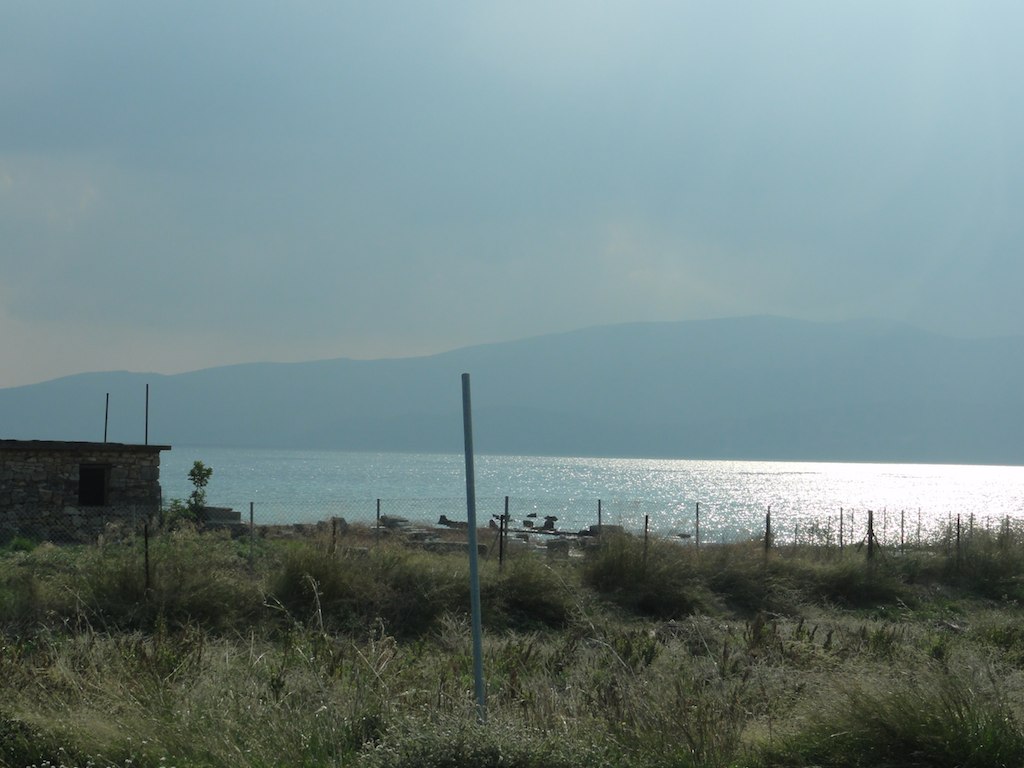 Saronic Gulf - The Battle of Salamis 480 BC Greeks defeated the Persians. A modern-day reconstruction of an Ancient Greek Trireme, in a shed at the Museum of Naval History in Faliron, not far from where the Athenian fleet defeated the Persian Navy at the epic Battle of Salamis. |
 |

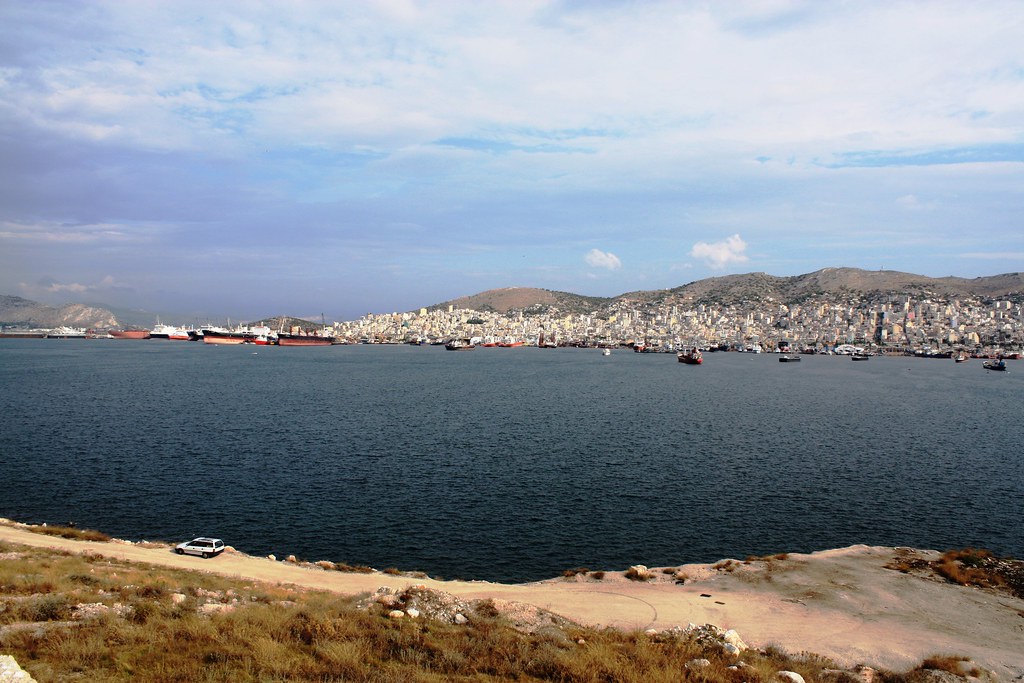





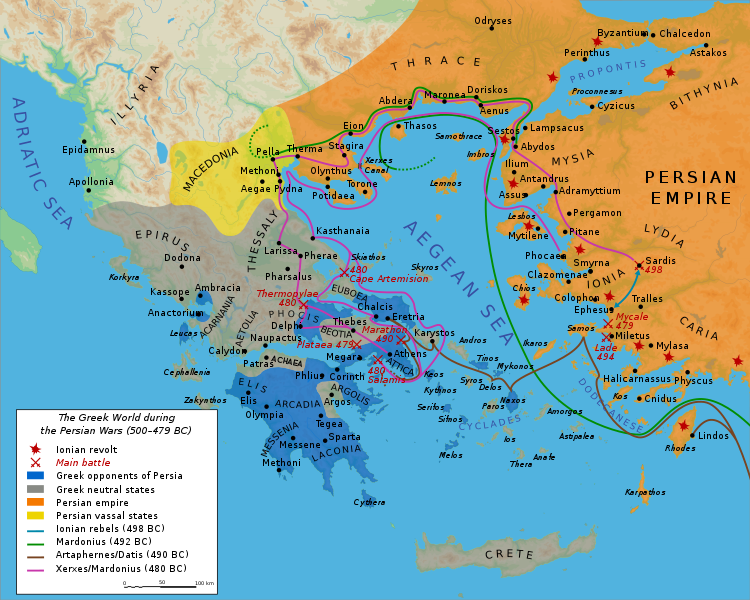
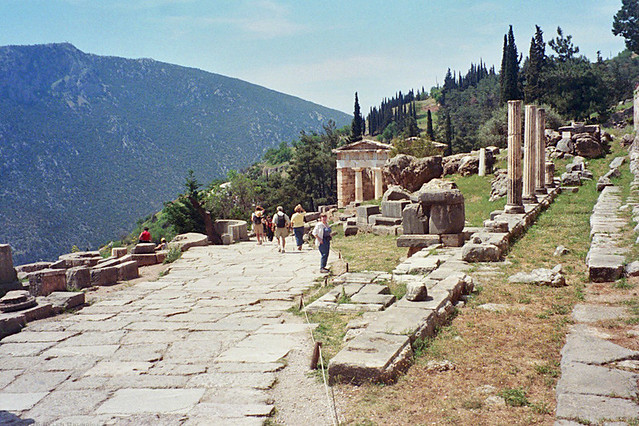

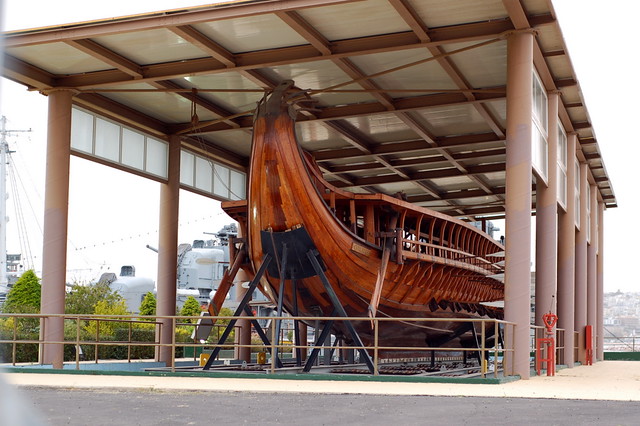
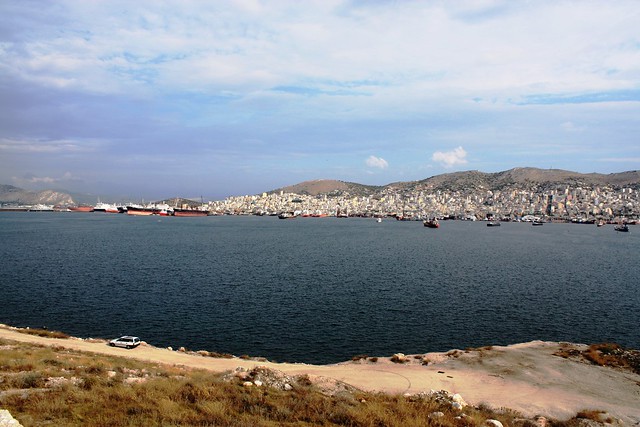
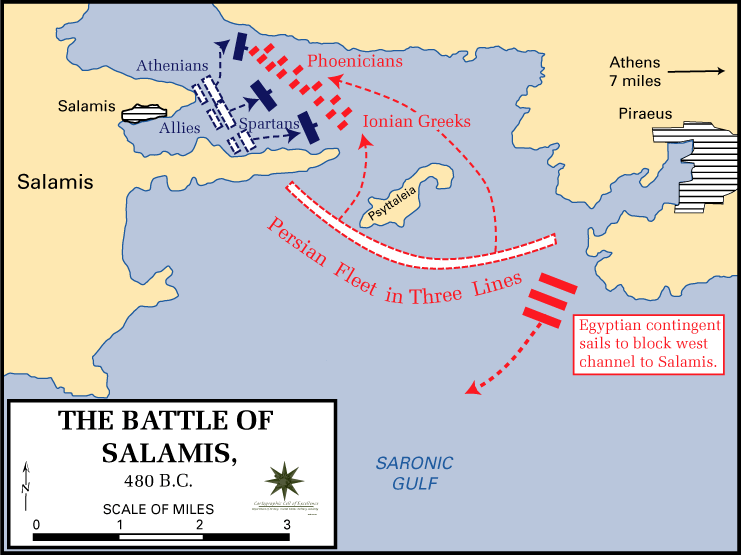
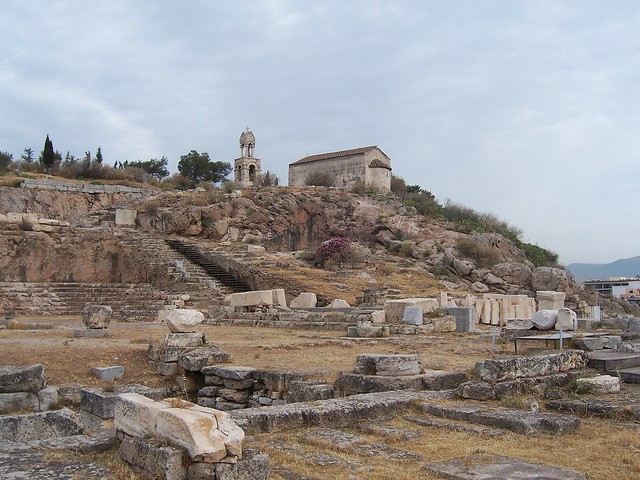

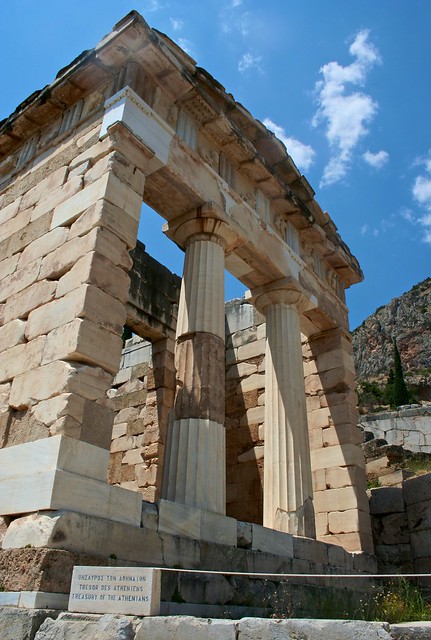
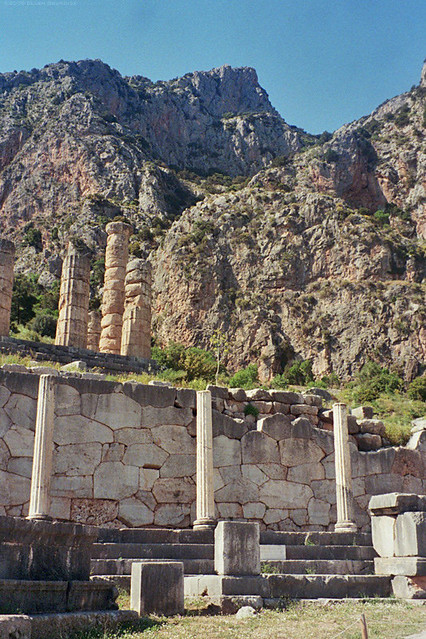

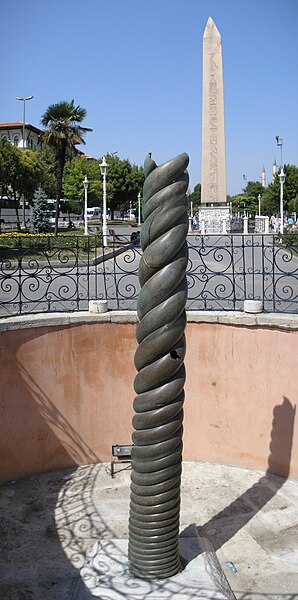
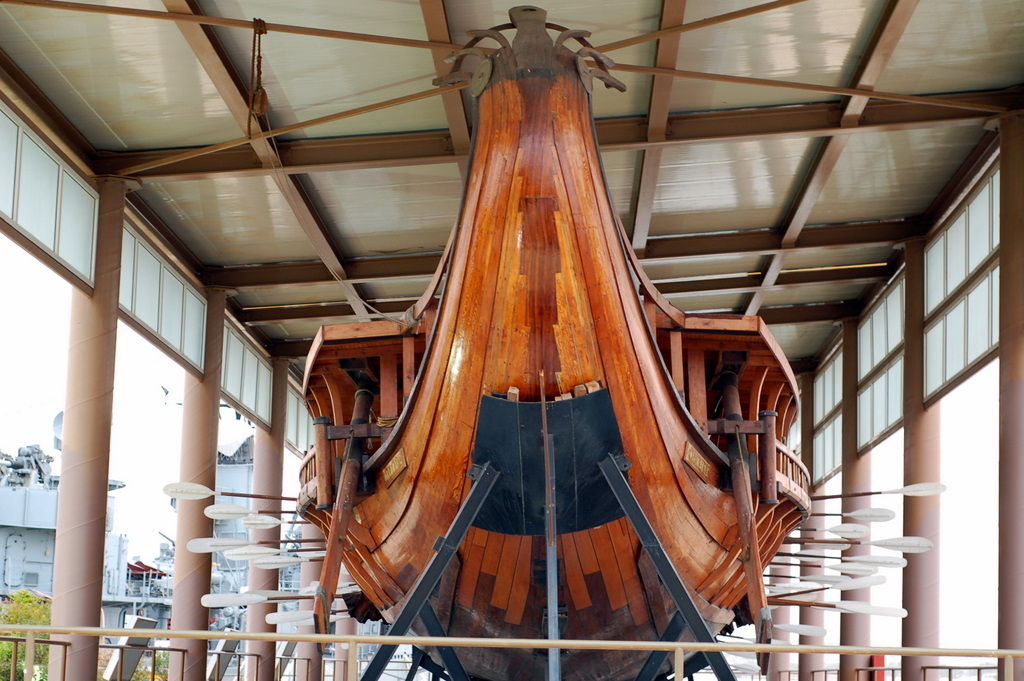
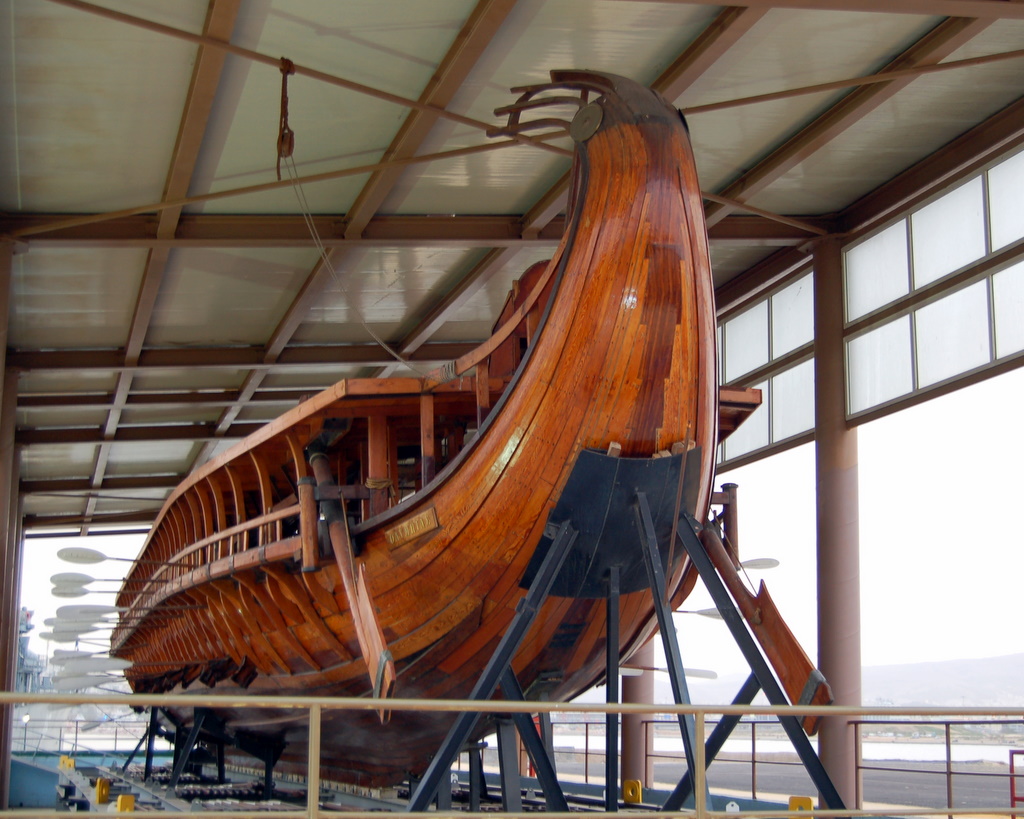
No comments:
Post a Comment